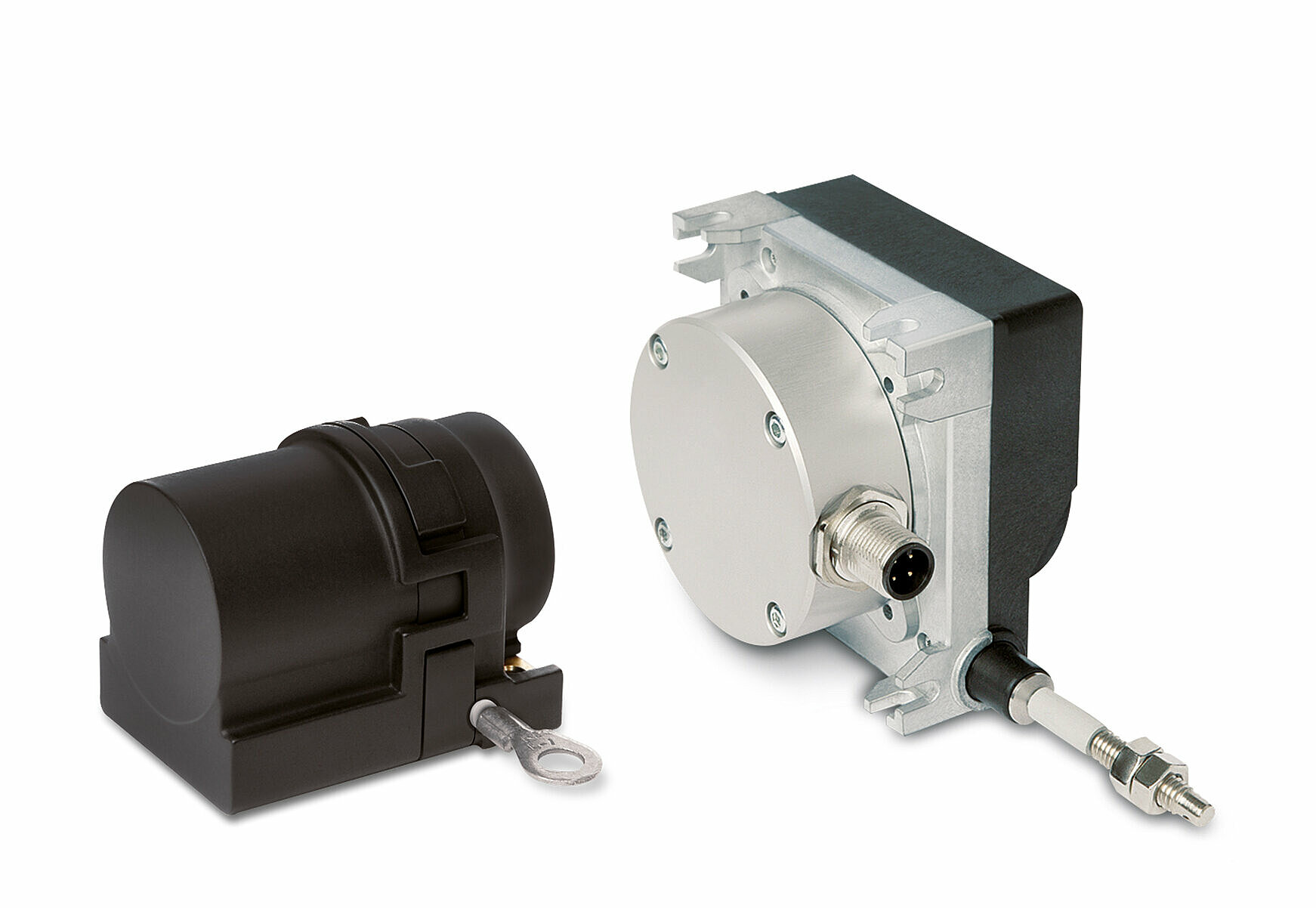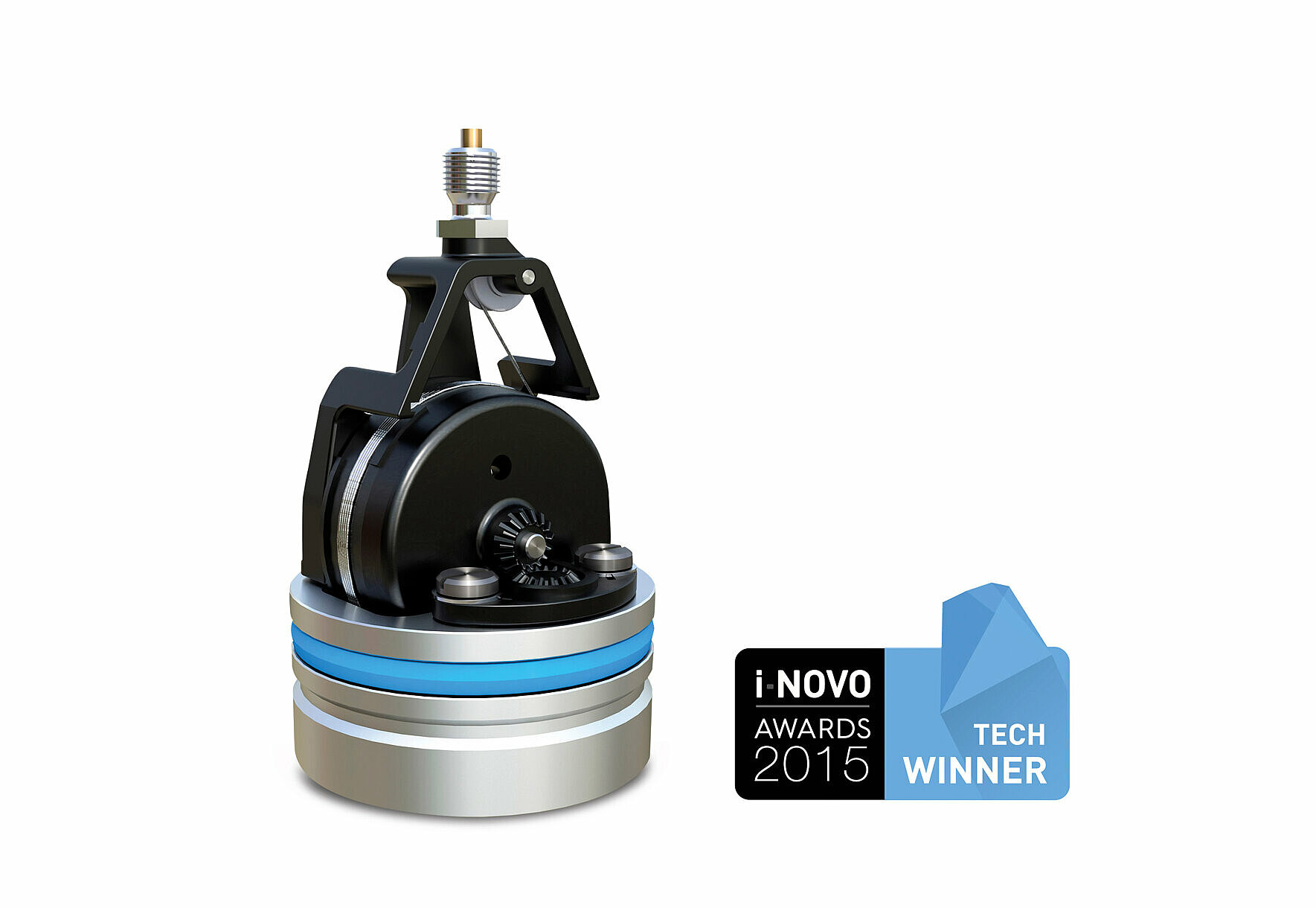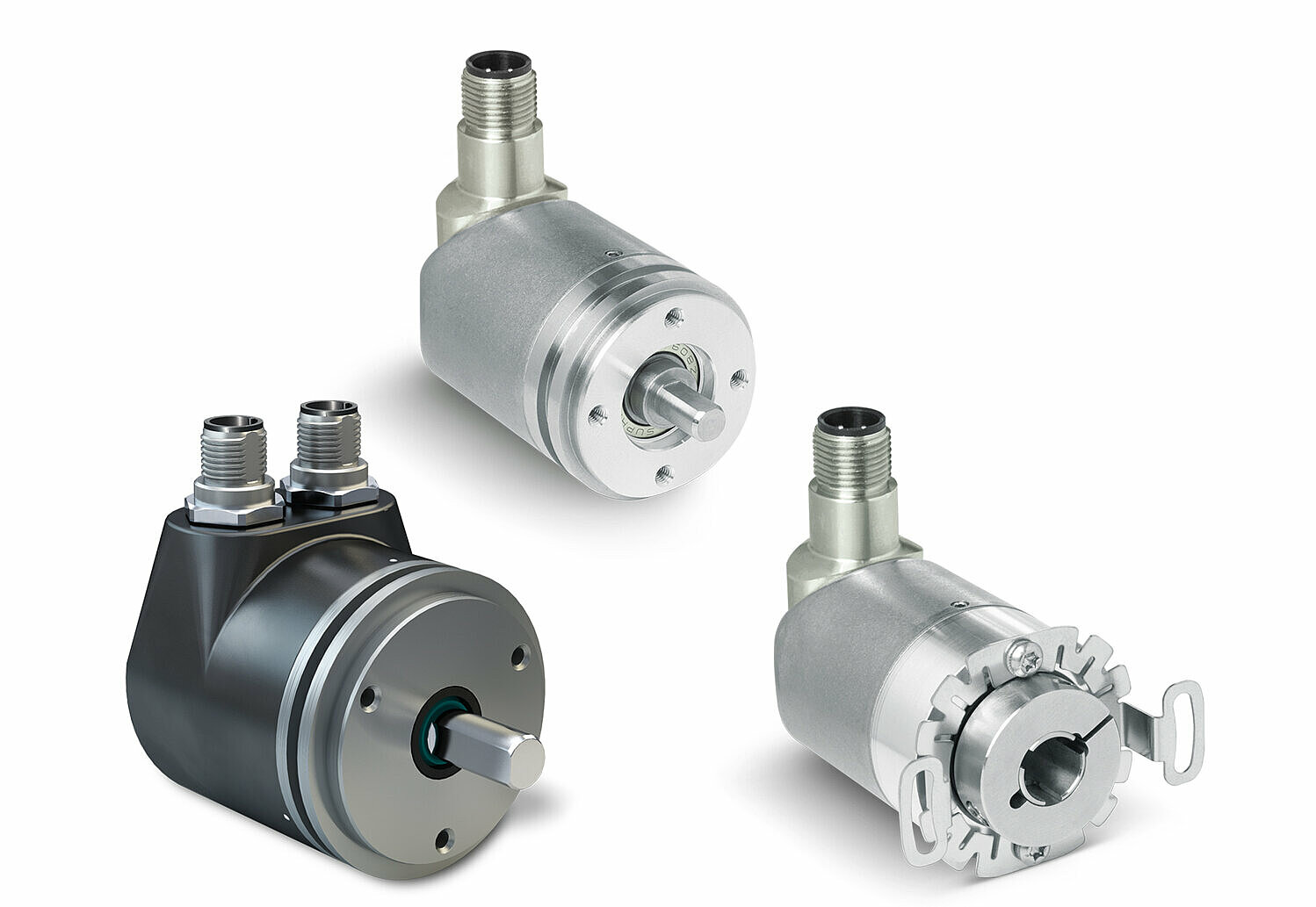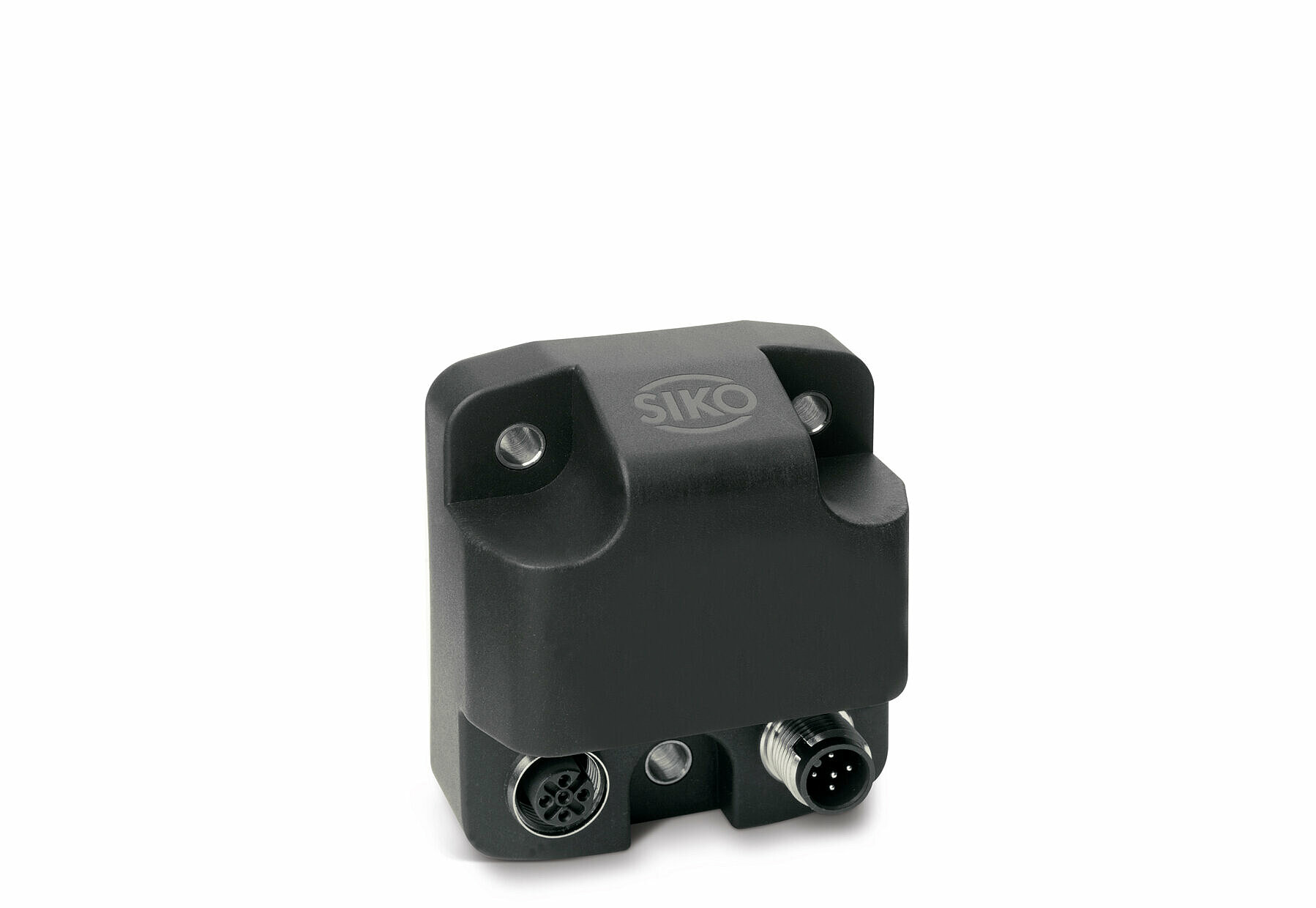Draw-wire sensors – also called wire-actuated encoders – are suitable to measure movement over distances from 5 cm to more than 15 m. They consist of a winding drum with a wire connected to a spiral spring and a transmitter. The wire is connected to the measuring object for measuring. If the measuring object moves away, the wire is pulled out of the draw-wire sensor. A rotary encoder on the shaft of the winding drum can be used to check how many revolutions the winding drum has made and which wire length has been unwound. This wire length is also the distance between the draw-wire sensor and the measuring object.
At the same time, the spring on the winding drum ensures that the wire is always tensioned. This avoids measuring errors and rewinds the wire when the measuring object moves back in the direction of the sensor. For long distances outdoors, the wire-draw sensors are designed to withstand cold, moisture and dirt. Increased safety can also be achieved with a redundant sensor system in combination with the draw-wire sensor mechanism. Mobile machines, such as construction machines or crane and lifting technology, are a popular area of use for wire-actuated encoders or wire-actuated sensors.
Heat, cold, shock, water, mud or dust: sensors can be exposed to many types of loads. On the other hand, there are requirements in which the sensor systems must be particularly reliable to protect people, things and the environment from hazards and malfunctions of technical systems. In standards, these requirements can be found in the performance levels (PL) or safety integrity levels (SIL for short). These levels describe the probability of failure of a critical part. Safety sensors are therefore designed to work particularly reliably, even under difficult conditions.
In addition, these sensors have the option of "self-diagnosis" thanks to redundancies and specific functions. The diagnostic coverage degree describes how many percent of the faults can be detected independently by the sensor or with the aid of external components such as a safe control system. This makes it possible to put the machine into a safe state and thus protect both man and machine. In addition, safety sensors must have a high EMC compatibility and must be robust to protect against shock and vibration. Safety-related data transmission from the sensor to the controller is also possible via appropriate interfaces, e.g., CANopen Safety. Inclination sensors are often used when it comes to angle monitoring in crane and lifting technology.
An inclination sensor (also called inclinometer or tilt sensor) is used to establish the exact relationship to the vertical for a frame or to detect and monitor changes in the angle of inclination with respect to the center of the earth. The basis of the earlier inclination sensors was a simple pendulum, which changed direction due to the inclination movement. This change in direction was then evaluated optically, inductively, electronically or on a capacitive basis. Modern inclination sensors work on the principle of MEMS (Micro-Electronic-Mechanical System), for example. With this measuring principle, a series of electrodes are housed in a hermetically sealed ASIC chip.
The capacitive voltage between the electrodes is measured Detection can be carried out either with one axis or with two axes. The advantages of inclination sensors over other sensors lie in the mechanical mounting. As a result, an inclination sensor can measure the inclination of a machine part or the entire machine without any other mechanical aids or components. They also have no mechanical parts subject to wear-and-tear such as bearings and can be mounted outside of the pivot point (off-axis). Inclination sensors are often used when it comes to angle monitoring in crane and lifting technology.





